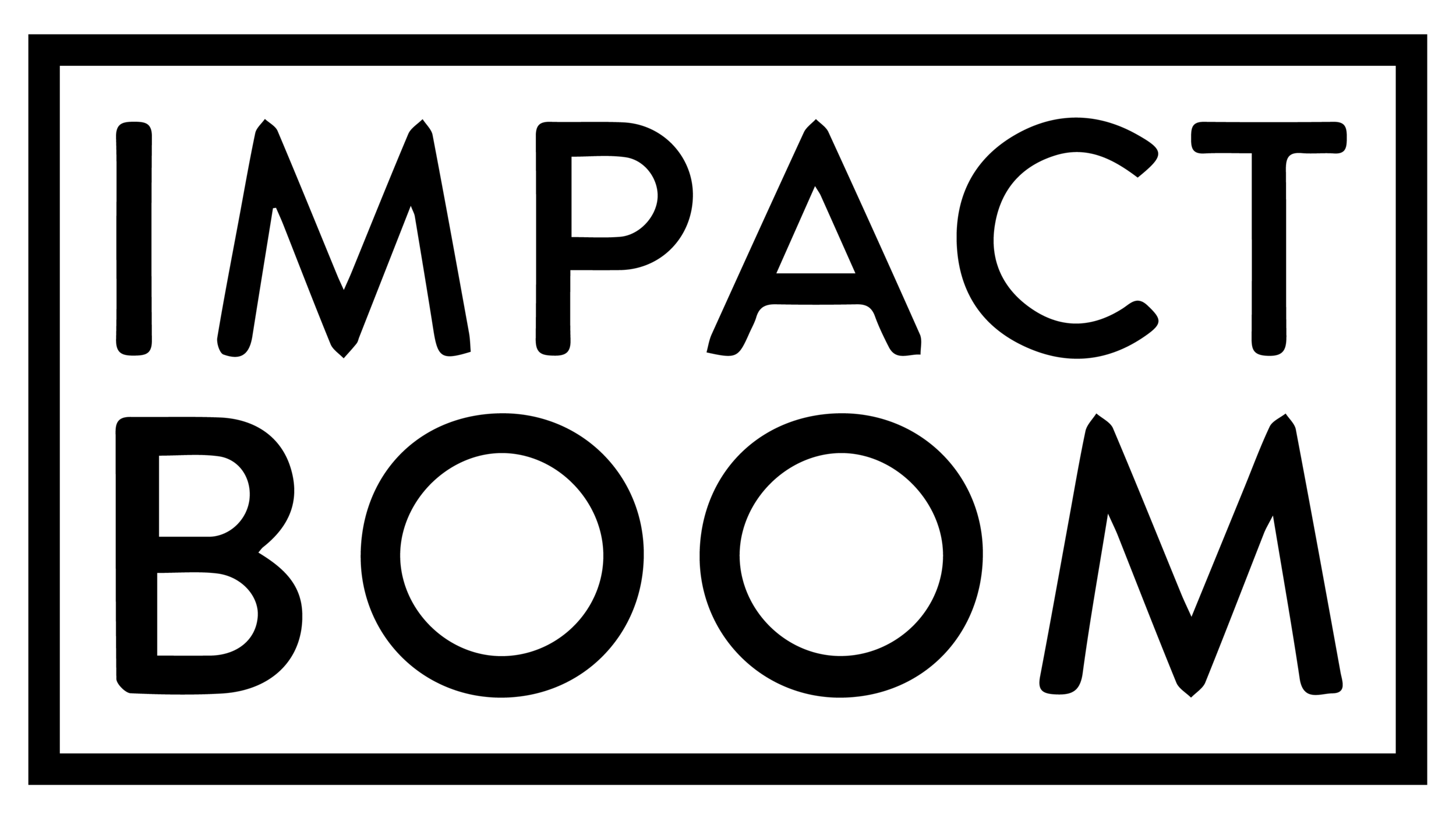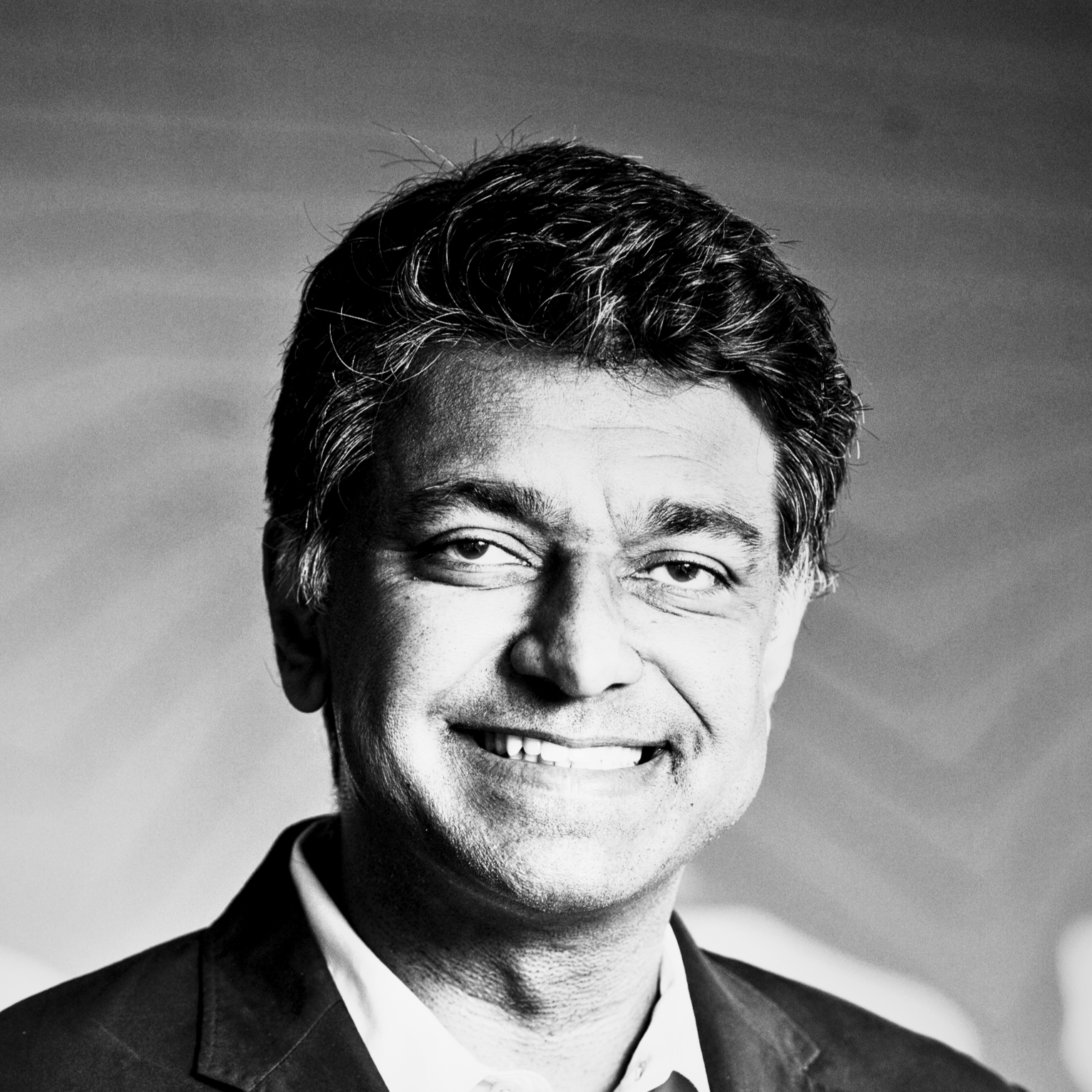Zia Khan On Scaling Social Innovation And Bold Strategies For Systemic Change
Zia Khan is a Senior Advisor at The Rockefeller Foundation, which he joined in 2009. He previously held roles as Chief Innovation Officer and head of global program and strategy teams within the Foundation.
Before his time at The Rockefeller Foundation, Zia established and led the San Francisco office of Katzenbach Partners. In this role, he provided strategic, innovation, and organisational advice to clients across diverse industries.
Zia's current board affiliations include serving as Board Vice Chair for Stone Barns Center for Food & Agriculture and as a Board Director for Atlas AI, a company that delivers geospatial-based insights.
Additionally, he contributes to the advisory boards of University College London’s Institute for Innovation and Public Purpose and Stanford Social Innovation Review Books.
Zia discusses advancing systemic social innovation through bold strategies in climate, health, and economic opportunity, while exploring the role of AI in scaling impact and reimagining collaborative networks for the future.
Highlights from the interview (listen to the podcast for full details)
[Indio Myles] - To start off, can you please share a bit about your background and what led you to working in social innovation?
[Zia Khan] - It wasn’t a straight or linear path, as I’m sure is the case for many others. My family is originally from India, but I grew up in Canada. When I was a child, we would make periodic visits back to India. The contrast between a society like Canada, which is fairly egalitarian and everyone has a fair shot of going to school, and the stark poverty and inequality in India, was striking. This set one of my North Stars: helping people get an equal shot at everything.
As I grew up, I became interested in science and maths. I studied engineering and moved to the United States where I completed my undergraduate degree in engineering. I didn’t want to work as an engineer, so I decided to pursue a PhD in engineering, which I received in the 1990s. I was at Stanford in Silicon Valley at the time, a hotbed of innovation and experimentation.
Consulting firms were hiring people then, and I’ve always had another North Star; my enjoyment of solving complex problems. So, I joined a consulting firm. In engineering, you learn how to solve technical problems, and in management consulting you apply this skill to businesses.
Eventually, I was recruited to The Rockefeller Foundation. They wanted someone to bring a strategy perspective from the private sector into the kinds of challenges they were addressing. I found social innovation through this combination of drivers: my North Star of helping people live good, thriving lives; my background in innovation and R&D; and my passion for solving problems collaboratively. Those three ingredients came together to define how I think about social innovation.
As a Senior Advisor with The Rockefeller Foundation, how is it advancing strategic innovation and creating impact with global challenges?
For those who may not be familiar, The Rockefeller Foundation was founded in 1913 and stemmed from the belief and resources of John D. Rockefeller Sr., who created Standard Oil, one of the great global companies at the time (though it was also a monopoly in the oil business).
He had two major insights. The first was to focus on the root causes of problems, and this approach is what the Foundation called scientific philanthropy. The idea was that there’s a difference between supporting a hospital to treat cases, compared to developing a vaccine to prevent those cases in the first place. Addressing root causes of complex issues became a cornerstone principle of the Foundation.
The second insight was a belief in going to scale. It wasn’t worthwhile to do things in an artisanal or bespoke way, but rather to think about how to partner with governments, markets, and others to grow solutions. This is something embedded in his DNA from Standard Oil.
Since then, the Rockefeller Foundation has had a long history in public health, agriculture and food security, and employment issues. Today, our strategy is focused heavily on climate: helping create solutions that enable people to deal with the effects of climate change and mitigate its impacts.
We do this in several ways. Our largest effort is around the energy transition. We helped launch the Global Energy Alliance for People and Planet, where funders including the World Bank have come together to support projects that help countries shift their energy systems to renewables, while also sparking economic development. For example, in a village, it is more useful to build a mini-grid that powers businesses and infrastructure rather than simply distributing solar lanterns.
Another major effort is in food and regenerative agriculture, particularly using school lunches as both a tool for providing nutritious meals for children and as a catalyst to support farms practising regenerative agriculture.
We’re also deeply engaged in innovative finance, exploring opportunities at the intersection of climate and health, examining the impacts of artificial intelligence, and ramping up work in the United States around economic opportunity.
It’s a broad portfolio, but our breadth is important because many of these issues intersect, with overlapping stakeholders and audiences. At its core, the Foundation is trying to find innovative solutions that can scale and have a real impact on people’s lives.
How has your journey from the private sector into innovation leadership shaped your perspective on scaling social impact?
It’s an interesting question, because there are certain things the private sector can learn from the social sector and vice versa, but it’s not always straightforward to import techniques from one space into the other.
For example, the private sector has strong muscles around accountability and execution. It also has the benefit of a profit and loss framework, which provides a clear guiding structure for what needs to be achieved and how all the components align towards that goal.
In the social sector, you don’t have this luxury. While it’s important to identify key metrics (and I believe in doing so) the reality is that everything is more complicated. A job is not always just a job, and the context matters. Impact investing has tried to bring more of that private-sector way of thinking into the space, and in many ways it has succeeded. But in the social sector, setting goals and creating accountability is a much more social process that has to be built into the strategy rather than assumed.
Where the social sector excels is in thinking about movements and driving changes in cultural discourse. The private sector touches on this through advertising and branding, and some companies are quite creative around ecosystems, though often those ecosystems are still largely transactional. The social sector has developed techniques and approaches for engaging people’s mindsets, reframing problems, and advancing systemic change, all areas where the private sector could learn a lot.
I think of all these approaches as tools. The question then becomes: how do you assemble the right mix of tools to drive impact? Social innovation is such an interesting space because it brings these lessons together, drawing on private sector innovation while integrating approaches to systems change from the social sector.
What are the most promising applications for artificial intelligence within social innovation and impact, and how can organisations mitigate potential risks?
I tend to think of the opportunities regarding AI in three categories.
The first is organisational effectiveness and efficiency. How do you make business processes run more smoothly? For foundations, how do you make life easier for partners? One example could be a chatbot interface that produces a grant application quickly and easily. Not only would this reduce administrative burden, but it could also level the playing field. A mature US-based think tank may already know exactly how to prepare a grant application, while a new think tank in India might not. An AI-driven tool could serve as an intermediate device that helps both. That’s a huge opportunity, and you can imagine the same for many internal processes that could be enhanced with AI.
The second is knowledge management.
One of the greatest assets foundations and social sector organisations hold is knowledge, which includes what they’ve learned and the insights they’ve gathered. Yet so much of this knowledge remains buried in evaluation reports or PDF research papers. Just as AI is being used to analyse medical scans with remarkable accuracy, I see great potential in creating public tools that place the world’s best knowledge at people’s fingertips. This could ensure the lessons and evidence we already have are brought to bear on every problem.
The third opportunity, and the one I’m most intrigued by, is AI as a complement to teams. Imagine AI acting as a facilitator, helping people from very different parts of the world or sectors come together for a productive conversation. It could rapidly synthesise discussions and generate briefing notes within an hour, helping guide what the next session should cover far more efficiently than everyone scribbling down their own notes. In this way, AI could act like an extra set of training wheels, or even another team member.
THERE’S THis LOOMING QUESTION of will AI REPLACe JOBS. It is inevitable to some extent, but we do have a choice in where we steer this technology. My hope is that we can guide it in a pro-worker direction, one that complements human contributions, helps people work in joyful, thriving ways, and enables achievement, rather than simply replacing people.
What trends or shifts are you currently observing in social innovation, and what do you think is necessary to advance this movement in the face of global crises?
The shift I’m seeing is that people are realising technocentric responses are insufficient in the climate we’re operating in today. By technocentric, I don’t just mean technology, but also evidence-based research: studies that identify the “best” ways to improve children’s health, education, or resilience against climate change.
There was once a strong belief that if we produced objective insights and definitive answers, then funding and policy would naturally follow. I don’t think we can rely on that anymore. Take vaccines as an example. Here in the United States, a lot of policy and public behaviour has run completely contrary to the established body of evidence about their effectiveness.
That tells us something: as we drive solutions forward, we have to think more about politics. We need to get creative about how we engage in it. This may mean drawing lessons from branding, campaigning, and movement-building, areas where the social sector already has rich experience.
This is where I see both the opportunity and the need. We must integrate the strengths of those working on technocentric solutions (whether that’s technologies, policies, or business models) with the strengths of those working on movements and advocacy. Packaging those approaches together is what will enable us to advance real, systemic change.
What advice would you give to an emerging leader, entrepreneur, or changemaker who wants to drive innovation and make a meaningful difference?
We need a lot more of these people. Thank you for this question, I’m glad you’re aggregating advice across all the thoughtful people who join your podcast.
Everyone says the next 10 years will bring a lot of change, but I truly believe it. We’ll see the growing impact of AI, the reorganisation of the geopolitical order, and within countries themselves, people are questioning long-standing North Stars like democracy; things many once assumed were unshakable.
We’re going through a time of deep change. The last time I really reflected on this, I was reading Thomas Kuhn, a political philosopher who wrote about the theory of scientific revolutions. He’s the one who coined the term paradigm shift, though he used it in a much more specific way than we often do today.
Kuhn described how a paradigm, a way of working and thinking, functions until cracks start to appear, data that doesn’t fit, and anomalies can’t be explained. Eventually, the old paradigm collapses. What follows is an era of wild creativity, where people experiment, test ideas, and push boundaries, until a new paradigm emerges.
This framework helps explain how scientific disciplines evolve, such as the emergence of quantum physics. If you apply it to where we are today, I think we’re in that second-to-third stage transition. The old paradigms have collapsed, and we’re in this highly creative, chaotic moment where people are grasping for new ideas and testing what might work. A new paradigm will eventually emerge from this process.
My advice to social innovators is that this is actually a good time to be in the field. There are so many ideas emerging and so much activity happening, but what I think is unique about this moment is the potential for convergence.
How will this new paradigm emerge? Certain promising ideas will attract clusters of funding and partners, and new fields will take shape. That’s the exciting part of being a social innovator right now: you’re working in that creative, formative stage where the future is still being written.
There’s already a wealth of good advice out there on designing products, innovating, building business models, and scaling. But what I would add is the importance of investing in connections, not just as a means to an end, but as an end in itself. Build relationships. Build bridges across sectors and perspectives. Try to form coalitions where the whole becomes greater than the sum of the parts.
Of course, it’s not easy, especially when you’re focused on paying the bills within your own organisation. But if you can find those networks, aggregate together, and create coalitions, it will put a lot more wind in everyone’s sails. Given the macro environment we’re in, that’s both the opportunity and the imperative.
What inspiring projects or initiatives have you come across recently creating a positive change?
There are many organisations creating change, but rather than naming specific ones, I’d describe them as falling into categories.
Part of the paradigm shift we’re entering means some long-standing institutions will become less relevant. Many are no longer fit for purpose, and universities are one example.
Here in the United States, universities are in the midst of a crisis that has been brewing for some time, skyrocketing tuition, low admission rates, and an overwhelming emphasis on research. This has raised real questions about their function and role. We’re going to see similar re-imaginings across other established institutions. Some will adapt, while others may not.
What I think will be most interesting are network-based organisations. These are looser, thinner structures: broad affiliations of people who can come together as “flash teams” to incubate an idea, push a project forward, and then disband. Artificial intelligence could play a big role in making these groups highly fit-for-purpose, whether they form for a year or for five years, before dispersing and freeing up resources to tackle something else.
The challenge right now is that many institutions hold bundles of resources but lack adaptability. In contrast, these network-based organisations are agile, able to mobilise quickly around opportunities and needs. We’re already seeing this in collaborative funding models, networks and convening groups, and fellowship programs that are increasingly focused on fostering relationships between fellows rather than just supporting individuals.
To finish off, what books or resources would you recommend for our audience?
One is The Power Broker by Robert Caro, which is celebrating its 50th anniversary. It’s a fantastic read for those interested in New York City history, but more importantly, it tells the story of Robert Moses, who operated at both the macro and micro levels to drive significant changes.
The Power Broker is critical of him and the outcomes of his work, but as a study of technique, particularly around the use of power, it’s incredibly instructive. Every social innovator needs to understand power, because ultimately, it is the force that drives change across systems.
The second book I’d recommend is Big Bets by our president at The Rockefeller Foundation, Dr. Raj Shah. It’s part memoir, where he candidly shares what worked and what didn’t in his career, but it also lays out the model that guides much of the Foundation’s work today.
Big Bets explores how to set bold ambitions beyond your immediate resources, create unlikely partnerships, use data as a management tool to test hypotheses, and pursue novel innovations—seeking “two birds in the bush” rather than just “one in the hand”. It’s a very practical guide for anyone trying to drive large-scale change.
The third book I would recommend is Making Conversation by Fred Dust, a partner, colleague, and friend. This book focuses on how to structure more authentic and productive conversations. There’s a real science to it, and I believe it’s vital.
When you’re working on complex problems, you spend a lot of time in convenings, meetings, and dialogues. We have plenty of techniques for spreadsheets and models, but far fewer for conversations. Getting better at how we talk to each other is key to improving productivity, building the relationships and coalitions we need, and sparking the ideas that lead to real impact.
Initiatives, Resources and people mentioned on the podcast
Recommended books
The Power Broker: Robert Moses and the Fall of New York by Robert Caro
Big Bets: How Large Scale Change Really Happens by Dr. Raj Shah
Making Conversation: Seven Essential Elements of Meaningful Communication by Fred Dust





